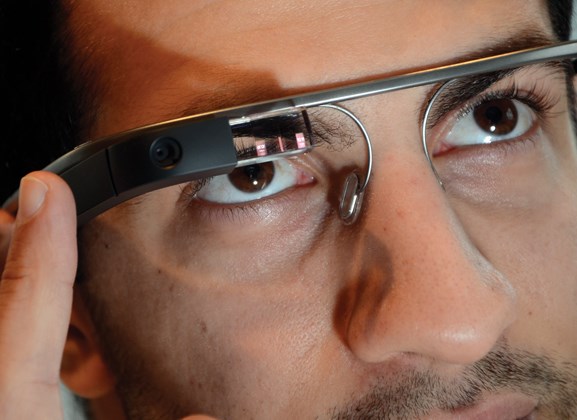A tech savvy North Vancouver research and development firm has made advancement on the yet unreleased Google Glass that company owners are hoping could beam them into the big leagues.
Vandrico Solutions Inc., a company that specializes in creating workplace applications for wearable technology, discovered a small flaw in the picture colours projected by the high-tech glass while working with one of the prototype sets.
Bayan Bennett, a former intern now working for Vandrico, was the person who discovered the problem.
"He noticed it right away and it kind of bothered him," said Kenny MacKenzie, cofounder of Vandrico. But Bennett, an engineering graduate from the University of British Columbia, knew how to fix the problem.
"He wrote a white paper and actually did the physical calculations as the light was being passed through the prism to determine exactly how it was being distorted and then how to correct for it," said MacKenzie.
MacKenzie said there were parts of the Google Glass screen that throw up a little bit of red and other parts that throw up a little bit of blue because the light is not bending properly through the prism.
Bennett corrected for it by essentially shifting the pixels that are being sent out of display very slightly, said MacKenzie.
Once corrected, the company was able to advance the sharpness of the Google Glass image by up to 35 per cent.
He said the 35 per cent improvement on the sharpness of the image comes from the background composition.
"It's really quite simple at the end of the day. It's surprising that Google hadn't fixed it themselves already," said MacKenzie.
MacKenzie said Vandrico has shared its findings with Google, but Google has not yet released anything publicly.
Vandrico does research and development and consulting, specializing in wearable technology in the industrial workplace.
"We're looking at Google Glass applications for things like mine sites, shipping (and) receiving, logistics, engineering, construction, that sort of stuff," said MacKenzie.
He said the advancements the company made on Google Glass took less than three weeks to complete.
"The science behind it is actually relatively simple," he said.
MacKenzie said the work his company did would be considered fine tuning.
The Google team itself would be more likely to work on significant hardware adjustments, and would be focusing more so on the user experience than doing fine tuning, he said.
"The reason we went after it is because we thought this was a pretty interesting improvement to make.
It was part of our analysis that we were doing anyway to understand how all those components worked and what they were capable of."



